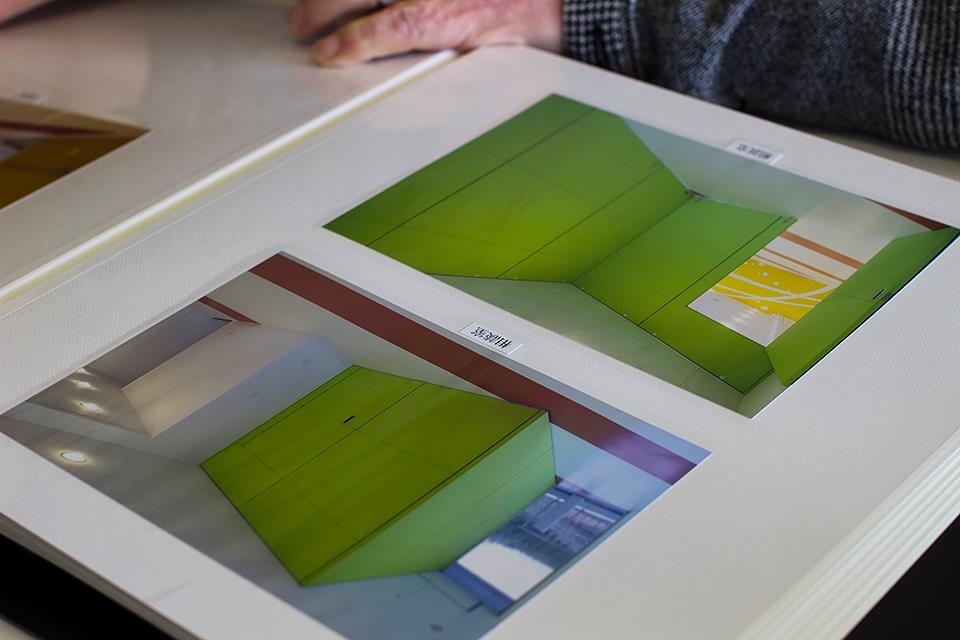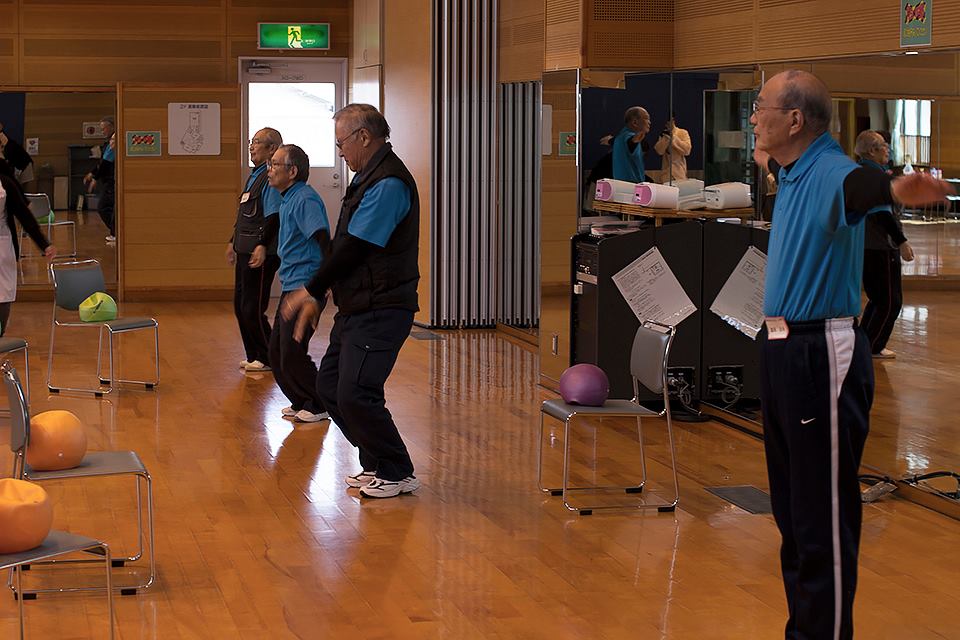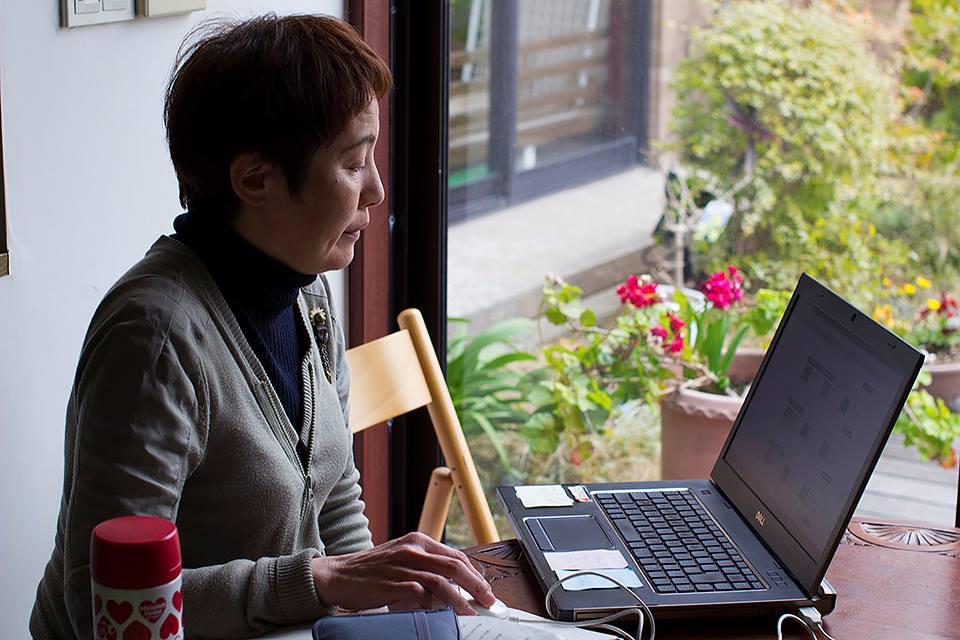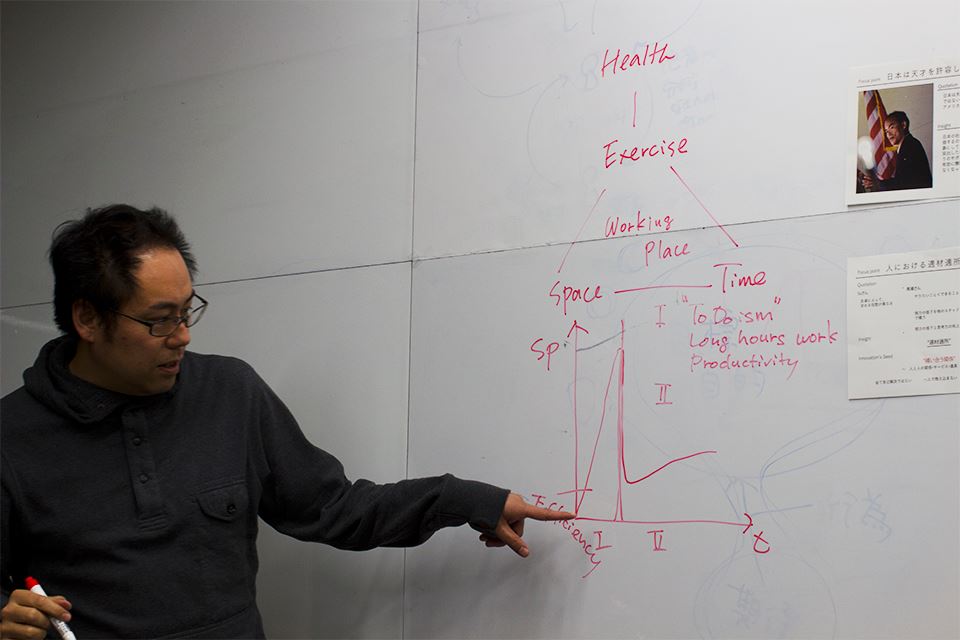The last month we have of course conducted desk research by reviewing online articles, and talked informally with people about the topic of our research. But it felt like the project only really started last week as we had several interviews, followed by a reframing session on Saturday. Takeshi Okahashi from Re:public Inc. helped us out a great deal with these interviews by arranging them, and acting as a translator during the interviews. On top of that we also got to see more of Fukuoka as we travelled to various places for the interviews.
Interview 1: Mr. Masao Saito, architect
Our first interview was with Saito-san, a 66-year old architect. After a very successful career he is now self-employed, running an architecture company along with his sons. One of his slogans is “A way of life”, and he always tries to design a building according to the lifestyle and needs of his customers. To get an idea of this he conducts interviews and hands out questionnaires. As he is not only an ageing employee himself, but has also designed several buildings for elderly people, he could tell us very well about their needs. He mentioned that first of all mobility is very important, and elderly people should be able to easily get from one point to another. There should also be many resting points such as benches or chairs. The reason for this is that there is a significant decline in physical energy when ageing. He told us that making the environment stimulating is also important, by adding colours and drawings, and adding directional cues signalling where to go, as spatial skills tend to decrease when ageing.
Participant observation: Fitness for the elderly
The next day we went to a fitness club for elderly people to see what effect exercise had on them, and hear stories that might be interesting. The exercise routine was focused on being fun and social, and combined physical as well as mental exercise. The volunteers who organised it clearly emphasised a relaxed and fun atmosphere, by encouraging the giving of compliments and clapping for each other. Next to that they also asked the participants about their daily lives, troubles and thought, something that can help elderly people a lot as they often have to deal with more losses around them as they grow older. We noted that the exercise definitely had a positive effect on the participants, and it made many more cheerful and energetic.
Interview 2: Ms. Moriyama, fitness instructor
On Friday we interviewed Moriyama-san, a fitness instructor who has devised a special workout for keeping elderly people fit. She told us about the importance of keeping fit as we’re ageing, as it can keep us out of that stage were we need consistent assistance to do tasks like getting out of bed and dressed. This is the care that puts most pressure on society and finances. She tries to make older people move again by adapting traditional aerobics to make a less intensive, more social and more fun workout. She is also encouraging companies to integrate it in a working week, but unfortunately it turns out that they often find work more important than exercise, and still have to be convinced of the long-term effects of exercise on employees’ health, well-being and functioning.
First reframing session
Last Saturday we reviewed our findings with various people from Re:public Inc. during a reframing session, to see what conclusions we could draw from our research till now. Our main conclusion was that exercise is very important for people to stay healthy, especially as they grow older. This could not only make them function better in the workplace, but improve their overall well-being and quality of life. However, as was noted by the people from Re:public these are the results of only a small number of interviews, and not including any people who are working in a traditional office. Saito-san was self-employed and Moriyama-san a fitness instructor. Designing solutions based on the findings of our research till now could lead to solutions that will eventually prove ineffective in many workplaces, as there are rules and customs of which we are not aware. Hiroshi Tamura informed us for example about the fact that in many traditional Japanese offices it becomes significantly harder for elderly people to keep on working as they age. Their contracts change, earning them progressively less, and they often cannot continue working at a company after the age of 65. Therefore Hiroshi’s advice was to first interview people who work at traditional offices and find out more about the culture and customs there. After that we can make a more informed decision about what solution might work in the Japanese company culture.










